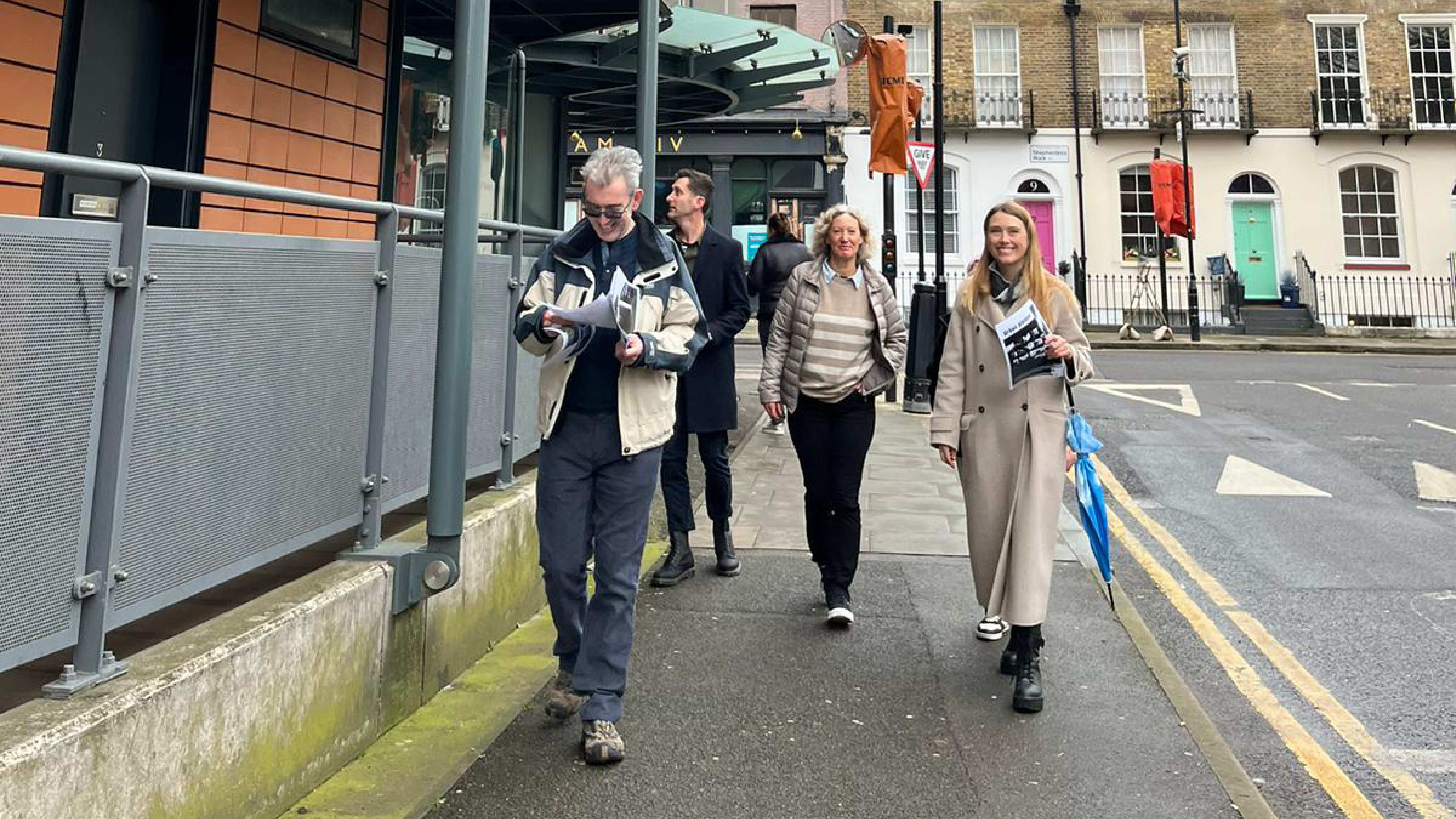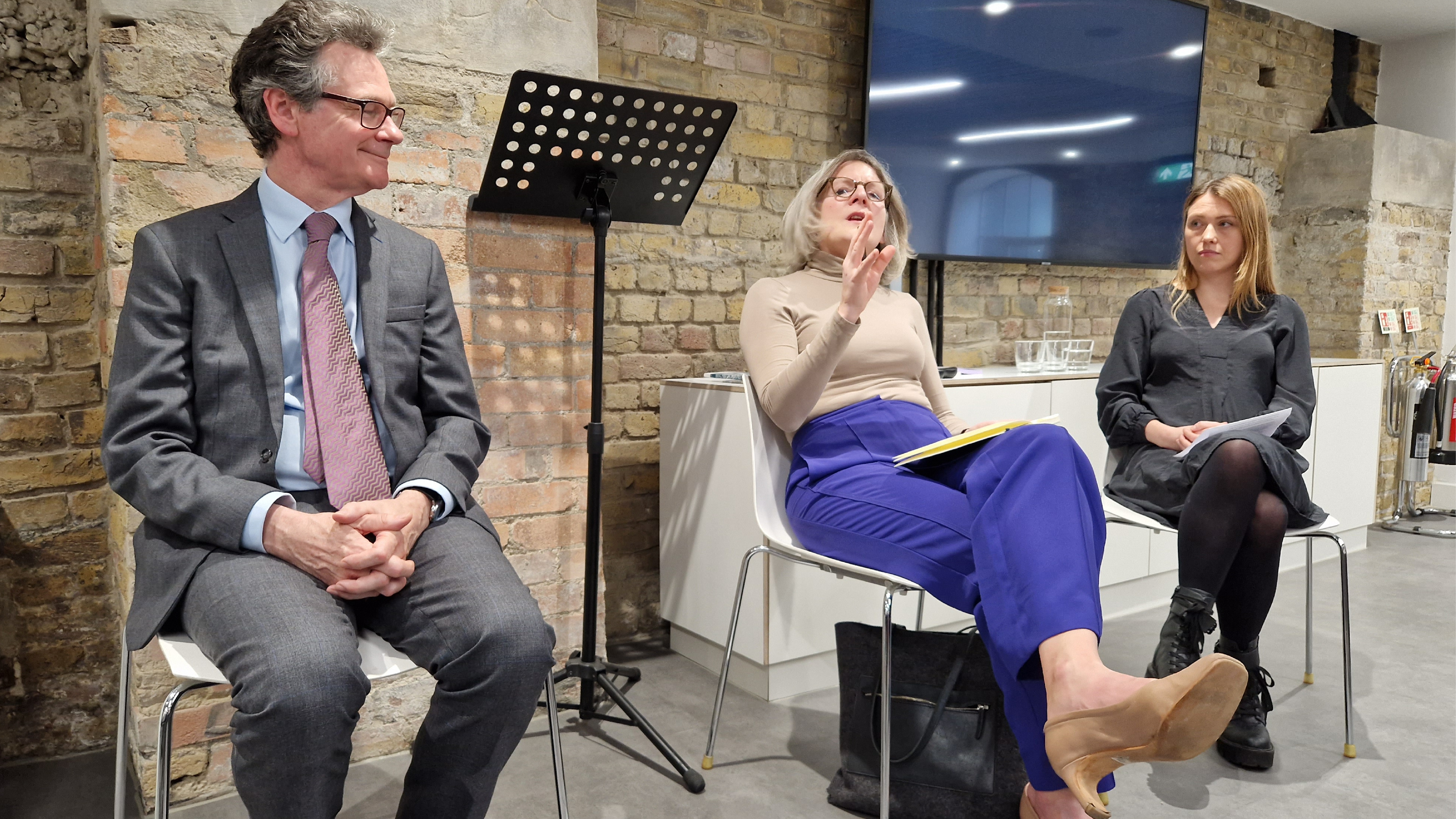Conference day this March was a takeover - by the PTE team behind the fast-selling Deck Access Housing Design Guide
At the conference welcome talk Andrew Beharrell explained why and how we made our book: The Deck Access Housing Design Guide. He walked us through how the London Housing Design Guide back in 2009 promoted deck access housing, as one way of creating dual-aspect homes and how, in the decade that followed, the first steps towards a full-blown revival of this controversial typology were taken by a clutch of London-based architects, PTE included.
Next up Rebecca Lee, the book’s buildings editor, told us how she identified the various contemporary and historic exemplars that we included in our guide. Rebecca’s research saw her explore online digital archives and the architectural press, as well as physical archives – especially for pre-internet projects which, generally, are poorly documented on the internet (apart from world-famous examples like Park Hill). The challenge was distilling it down as there were so many interesting examples – although it means we have accumulated an extensive library of precedents, some going back to the 1500s.
Rory Olcayto concluded with a tour of the history of modern deck access housing. This covered its origins in the philanthropic housing of the 1850s, the local council-led housebuilding and upgrade programmes in the 1890s and 1900s throughout the UK, and the ambitious Modernist post-war design and construction surge which transformed British towns and cities in the second half of the 20th Century. He also explained how deck access housing was demonised in the febrile politics of the ‘70s and ‘80s, when ideas around collective living were abandoned at state level in favour of private home ownership.
Nikos Georgopoulos, PTE’s Head of Graphics, designed the book and in this session he explained his choices – the typefaces, the use of white space, the narrow margins, the tinted pages, and the personality he sought to inject into each of the three sections: history, case studies and guidance. He also showed cover designs we didn’t use and how we managed to work within the confines of Routledge’s strict publishing format and still end up with a good looking book.
This ‘time-line talk’ focused on the guide’s decade-by-decade overview charting the evolution of British deck access design. More of an open-floor colloquium than a presentation, colleagues discussed the social and economic history of each decade and how that shaped the housing solution of the day. We looked at schemes that didn’t make the cut for publication and this session also provided a stage for PTE’s staff to reflect on past projects and, given around a third have lived in deck access dwellings at some point in their lives, their homes too.

Andrew and Rory held a review of the range of projects featured in the book, noting the contrast between the seemingly conservative, if carefully crafted, British case studies with the first-glance-dynamism of the European schemes. Andrew picked out the impeccable detailing in Proctor Matthews’s Steepleton project, while Rory claimed Collective Architecture’s retrofit of a police horse stables in Glasgow as surely the only cobbled deck access scheme in the world.
The curved deck of Bureau Massa’s Rotterdam development, and the fun, vibrant Spanish deck access projects, were picked out for discussion alongside more general observations and questions around servicing, sociability and debate about integrating services and the role deck access housing could play shaping a new – urgent - national debate around the future of social housing.

The walking tour, led by Rebecca, visited four sites nearby to Diespeker Wharf. The first stop was Packington, a ‘70s built canal-side local authority estate regenerated by PTE in recent years. Its success has seen it become an exemplar of engagement: our masterplan helped win community support and was the basis of the outline planning permission and delivery strategy - and among the 800 new homes we built there, some were newbuild deck access.
Out next stop was Windsor House Estate, built in the 1920s in Hackney (right on the border with both Islington and the City of London.) Situated next to a pleasant central garden and play area, it has around 100 deck access flats and maisonettes typical of the time it was built. We then ventured to Murray Grove, Cartwright Pickard’s Hi-tech exemplar featured in the book.
For the practical guidance workshop, our Knowledge Hub colleagues, Roger Holdsworth and David Mao, presented an overview of the final chapter in the book – a manual for the working architect on the dos and don’ts of deck access design.
A lively discussion ensued, debating the pros and cons of cuts outs in decks beneath windows – which can improve upon privacy and to allow more light into rooms below but come with fire risk challenges; how best to distribute services in deck access housing (typical risers work more effectively for double-loaded corridor-led plans) and the best width a deck can be for socialising – and minimising fire risk (wider decks can cause smoke to gather and linger). Roger and David also explained how to access the vast resources the deck access book project generated – including proven flat-type templates.

Wednesday at Four
The conference wrapped up with a lively debate chaired by Rory with sharp insight from panellists Claire Bennie (of Municipal), guide co-author Andrew, and buildings editor Rebecca. Bennie identified access decks as one of many ‘common parts’, from lift lobbies to bin stores, that all collective housing has to deal with, regardless of typology. On decks, Bennie listed the pros – access to open space, their neighbourliness and the fresh air ventilation they facilitate. And she listed the cons - a lack of privacy (people looking into your home), a dependence on a higher standard of building management and the dystopian stigmas the typology has picked up.
Andrew spoke of the typology’s highly visible return, not only in the form of new deck access housing as evidenced by our book, but also in the smash hit musical Standing At The Sky’s Edge, recently ending its run at the National Theatre. The stage-set itself is a recreation of the building’s famous ‘streets in the sky’, celebrating the lives of Park Hill’s residents, and, said Andrew, along with the new wave of schemes, citing PTE’s own Jolles House and Stone Studios, a signal of a mood change regarding the typology’s fortunes.
Rebecca focused on social value, and how decks foster interaction and a sense of community among residents and lend homes a sense of wellbeing by making the outdoors easily accessible. You’re unlikely to take a moment to pause in an internal corridor within a flat block, she noted, but you might stop to consider the weather or take in the view when you open your front door to the open air in the morning.
Because Alan Powers was unable to make the event, Rory read his thoughtfully considered statement, which mused on his campaigning to save Robin Hood Gardens in 2008-9, when he was chairman of the 20th Century Society.
Wednesday at Four takeaways
Our long deck access conference day ended in the best possible way – with a party! After speeches by co-authors Andrew and Rory, and another from Municipal’s Claire Bennie, we celebrated the launch of the book with a packed house of guests. Many of the architects of the case studies featured in the book joined us for drinks and nibbles – including at least one of our European case study architects (hi Renata!). And we shifted a whole stack of deck access books too. Job done!






















